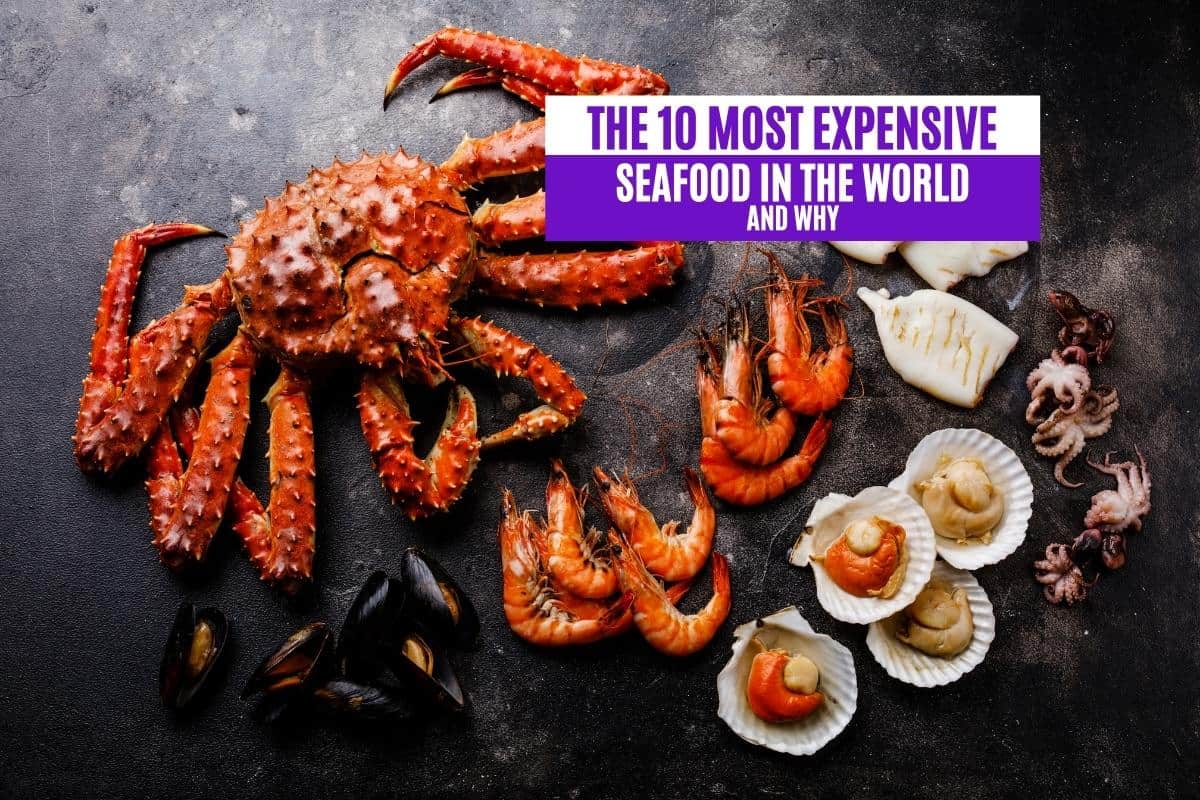Whether you’re a seafood lover or you just want to know about where rich people spend their money, we got you covered. Whether you love it or hate it, seafood is one of the largest sources of protein for humans all around the world.
Believe it or not, global seafood production has surpassed over 179 million metric tons. Within that, there’s a small niche for some exotic dishes and fish(es). Let’s talk about some of the most expensive seafood types and dishes in the world!
What Makes a Seafood So Expensive?
When a natural resource is expensive, we generally attribute that to one obvious factor; its rarity.
For example, gold, platinum, palladium, uranium, and plenty of other natural resources are valuable far beyond their function, but because of their rarity. However, that’s far from the only factor, especially when it comes to seafood.
Of course, seafood will only be expensive if people actually eat it, right? There may be several fish in the oceans and lakes around the globe that are far rarer than some on this list, but rarity certainly isn’t the only factor on the list. As we know from our previous lists, the price of chocolate faces similar factors.
Here are some of the most important factors in the price of seafood, but keep in mind, the prices can fluctuate over time.
Location
Often, there are serious logistical challenges involved with supplying fresh seafood, especially if a species is only native to one region.
For example, shipping fresh seafood from the middle of the pacific ocean to Boston before it spoils is a logistical nightmare. Seafood is notorious for spoiling quickly.
Well, deep-sea fishermen (and women) will require greater pay, more resources, more fuel, greater hazard pay, and larger-scale equipment to haul the quantity of seafood out than a lobster trapper off the coast of Cape Cod would. Believe it or not, many commercial fishers spend as much as six months at sea at a time.
Also, the location may even cause geopolitical issues that impact price. If seafood is native to one country’s waters, tension with that country (especially involving tariffs) may increase the cost of import.
Another factor dependent on location is the season.
Have you ever had frozen fish? Okay, have you ever had fresh fish? If you answered yes to both of them, you know that frozen fish is not even comparable to fresh fish in terms of taste.
Well, getting fresh fish during that species’ off-season is a challenge. If you want fresh Alaskan salmon or Maine lobster in the middle of February, you will expect to have to pay more for it.
Preparation
In many cases, preparing the food may drive up the price. Removing the egg sacks to process caviar is extremely difficult for many types of fish, and some chefs will have to train for years before preparing certain dishes for customers.
If that is the case, consumers should expect to pay high prices for skilled labor.
Taste
Again, why would any food have value if it wasn’t enjoyable? Most of the seafood on our upcoming list not only taste good but they have a unique taste that is difficult to replicate artificially or with any other seafood.
Many cultures and dishes require certain seafood as ingredients, and these dishes would be changed entirely (or ruined) without the essential seafood ingredient.
Supply
Endangered species, whether you agree they should be consumed or not, are going to be more valuable. The less there is of a type of seafood, the more expensive it will be, especially if there’s a reason for people to want it.
Prestige
The other half of supply is demand, and there is a man-made factor that gives certain seafood more value, and that’s status. Well, this fluctuates over time, and seafood is a perfect example of this.
For instance, lobster was once served as scraps to the landless peasants under many feudalist regimes. This was the norm for centuries, as the lobster was viewed as a worthless bottom-feeder that fishermen would accidentally pick up.
Well, contrast that with today, where nearly every 5-star restaurant and competitive chef in the world will try their hand on this classic, prestigious delicacy.
Now, there are many parallels similar to this, but consider this a major factor in any of the foods on this list.
Top 10 Most Expensive Seafood
Now that you know the most important factors affecting the price of seafood, let’s get right to it. Here are the ten most expensive types of seafood you can find in the world!
10. Lobster

We figured we would start with something you know from your local grocery store. As we mentioned, lobster used to be disregarded by the upper classes and royalty for centuries, and only recently became the sought-after delicacy we know today.
However, some types of lobster are more expensive than others. There are certain lobster-based dishes that cost up to $1,000 per plate, such as the classic lobster frittata.
The dish is complemented with 10 ounces of caviar, vegetables, and six eggs, and is often served in high-end restaurants in NYC.
Although, you can usually find more subtle lobster-based dishes at restaurants for a milder $25 to $100 per plate.
Now, if you’re looking to pick up some lobster from the grocery store, you may find chicken lobsters on sale for as little as $6 if you live in the northeastern United States. In most cases, however, you should expect to spend around $15 per pound, or at least $20 for the prestigious Fourchu lobster.
However, the majority of the weight of a lobster is non-edible. In terms of meat, you will likely spend at least $30 per pound at the lowest end.
9. Snow Crab
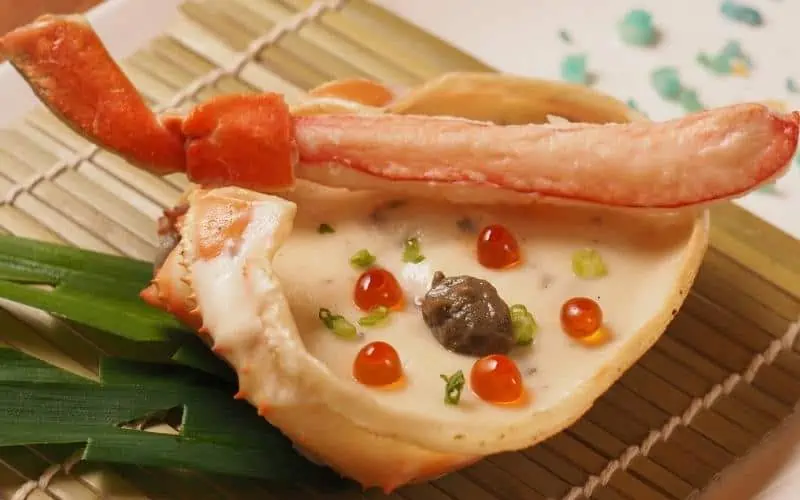
Another crustacean, you can expect to find fresh snow crab only during particular seasons, as most of it is sold frozen. Frozen snow crab will typically cost around $30 per pound, and far more for fresh crab, especially when served in a restaurant.
8. King Crab
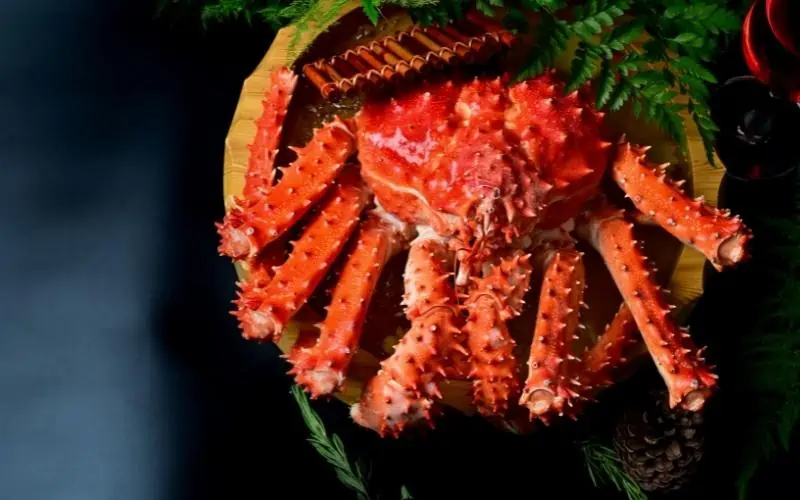
King crab truly lives up to its name, as it is one of the most sought-after crustaceans in the world.
Another costly seafood you’ve likely heard of, or even tried, thanks to the show Deadliest Catch, is Alaskan King Crab. In most cases, you will spend around $60 per pound just to cook it at home yourself.
Like lobster, the majority of the weight comes from the crabs’ shells, so in terms of the crab meat, you will spend at least $100 per pound on fresh king crab.
7. Percebes
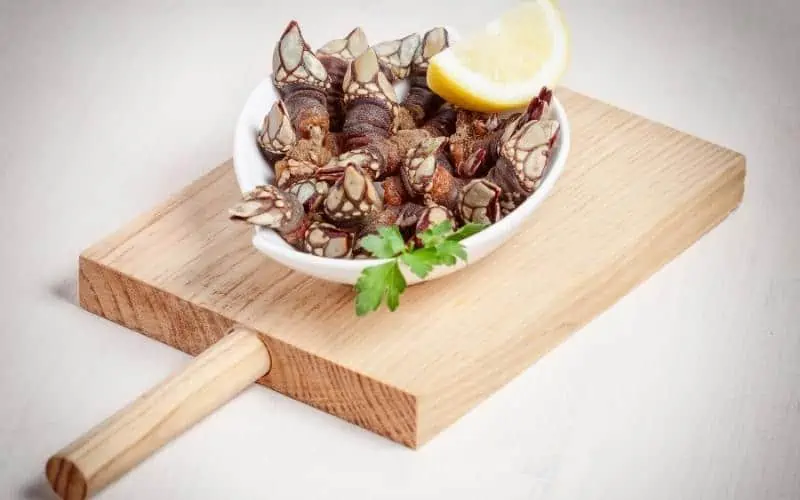
While you wouldn’t expect barnacles on this list, this is one of the most sought-after foods you could ever find stuck to a rock. On average, you can expect to pay at least $80 per pound for fresh percebes, also known as goose barnacles, which are difficult to find outside of niche restaurants.
6. Abalone
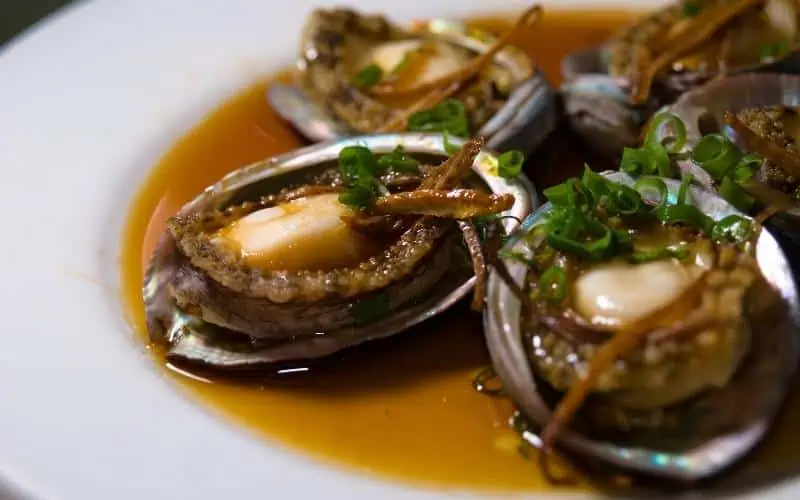
This special type of snail is found in California, and there is only a small, niche amount of diving for this particular delicacy allowed by law. Abalone is endangered and difficult to find, driving the price to around $125 per pound on average.
5. Pufferfish
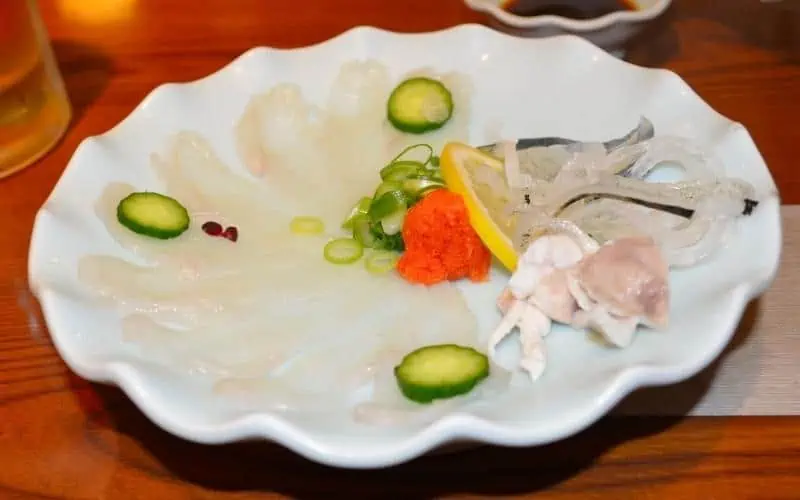
Famous for its toxic venom, the pufferfish has to be mentioned on this list. It’s one of the most prestigious foods available only in high-quality restaurants, and the stakes are lethal.
If you don’t already know, chefs (known as fugu chefs) must undergo a two to three-year apprenticeship before earning a license to serve this fish. Careful preparation must take place, as even small amounts of the venom from the delicate sack are lethal to humans, and there is no known antidote.
Not only does this put pressure on the chef to prevent killing somebody else, but they are also acting in self-preservation. If they serve pufferfish at a restaurant and it results in death, they may face jail time, along with a permanent revocation of their licensure.
Now, we mentioned that careful preparation and skilled labor will inflate the price. Well, this is the perfect example, as there is no room for mistakes.
For this reason, traditional fugu will cost an average of $280 for one dish. Yes, consumers from around the world pay this price to try the most dangerous dish on the planet.
4. Coffin Bay Oysters

Coffin Bay oysters get their name from Coffin Bay in southern Australia, which creates many logistical challenges since this is such a remote part of the world. Of course, you will find cheaper versions upon visiting the land down under, but they are, by no means, cheap.
Conversely, these tasty oysters, marked by their tremendous length, often weigh up to 1 kg each! Well, each oyster comes at a price of $100 on average, and far more for larger ones.
3. Baby Eel
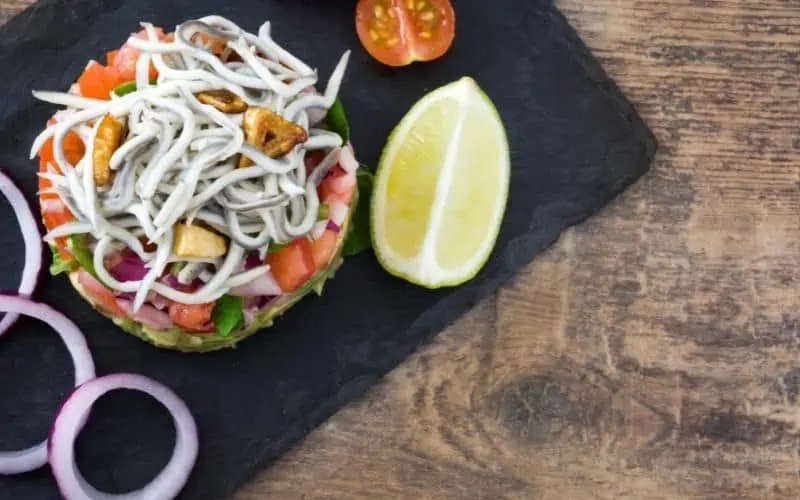
While most of the items on this list come from Eurasia, the United States is home to its own exotic fish, found in rivers throughout the continent. The baby eel sold for between $800 and $2,300 per pound for years, but that’s changing.
Since 2020, the market was hit hard due to economic concerns from the pandemic. For that reason, if you want to try baby eel for yourself, you may find it for as little as $525 a pound.
Yes, it’s still steep, but you may never get another chance!
2. Caviar
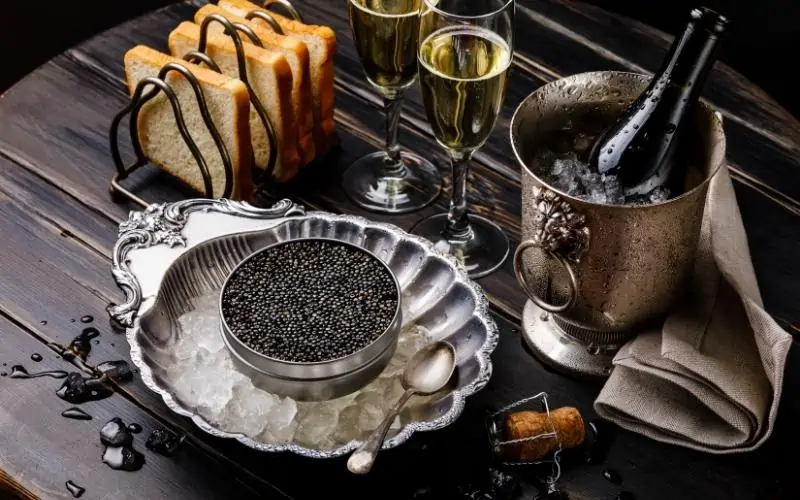
Without a close second, the most luxurious food in the world is undoubtedly caviar, which was likely the food you had in mind when we discussed the prestige of each food.
Among caviar brands, Almas is the most sought-after and expensive, as they offer small samples in gold-plated tins for a price of $34,000 per kg.
“Almas” means “diamond” in Russian, where this caviar is procured and distributed. However, these come from rare Iranian Albino Beluga sturgeons.
Fortunately, not all caviar costs $34,000 to try in gold tins. While some may not consider it traditional caviar, you can try lower-quality salmon caviar for $21 for a 7 oz jar.
However, if you want the real Beluga caviar, you should expect to pay between $200 and $300 per ounce of the delicacy. Believe it or not, even Walmart sells 17-oz Beluga hybrids for $2,200 a jar if you ever decide you want a taste!
If you want to enjoy caviar in a restaurant, you can expect to pay more for classic dishes like the Samundari Khazana curry, which uses Scottish lobster and some of the most expensive spices in the world!
1. What Is the Most Expensive Seafood?
To top our list, you probably weren’t expecting tuna. In all likelihood, you expected some type of caviar or crustacean and not a fish that you can pick up at your local grocery store.
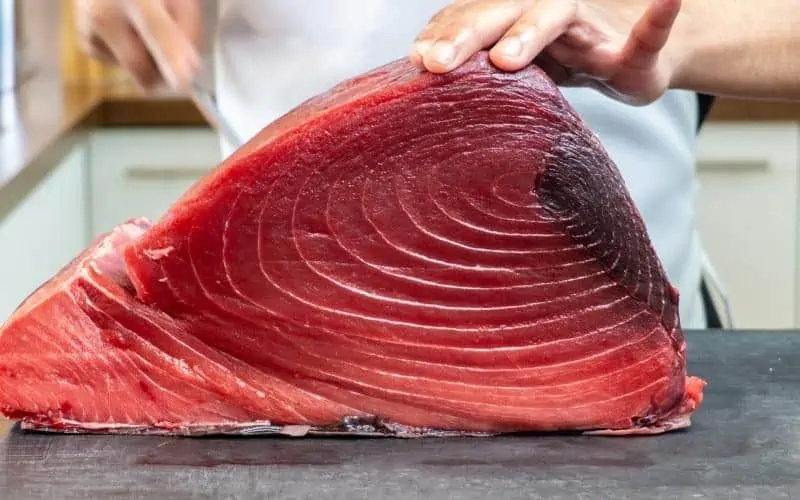
However, bluefin tuna is in a league of its own, as it costs an average of $3,600 per pound, making it the most expensive seafood on our list.
Bluefin tuna is the most sought-after form of tuna in traditional Japanese sushi, primarily for its marbling effect, natural flavor, and juicy texture when served raw.
Also, bluefin tuna is in short supply, as it is an endangered species. Regardless, many prestigious sushi restaurants in Japan still use the fish today, often at a staggering price to consumers.
Now, you may be tempted to ask the question: “Isn’t caviar more expensive per ounce?”
Well, the answer is yes. So, why is bluefin tuna ranked as number one? The reason is that most restaurants will have to buy the entire fish, as fishermen do not want to risk selling the entire thing piece by piece.
Also, when doing so, the restaurant takes a significant risk, as they may not sell the entire fish. So, how big of a risk?
In many cases, the cost of one bluefin tuna fish will exceed hundreds of thousands of dollars, with the record set at $1.76 million in 2013.
Try a Costly Seafood Yourself
Now that you know the most expensive seafood in the world, maybe someday you’ll be able to try them all! As long as there is a market for these niche foods, there will be a supply.
Stay up to date with our latest “most expensive” lists and feel free to contact us with any questions!

